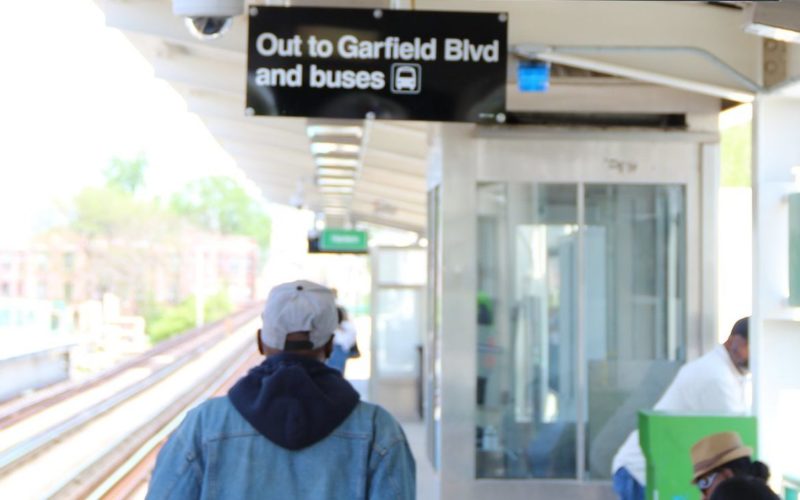

(“CHICAGO” BY HEATHER DOWD IS LICENSED UNDER CC BY 2.0)
Chicago is abuzz over city legislation introduced last week requiring Uber and Lyft drivers to meet some cab driver licensing requirements. The bill would require drivers to obtain a $600 “chauffeur’s license”—the same license currently required of taxi drivers. In addition, the Chicago legislation would require Uber and Lyft drivers to be fingerprinted by a city-approved company and submit to city vehicle inspections. Five percent of such “e-dispatch” companies’ total fleets would have to be wheelchair accessible—apparently immediately—and vehicles in operation would have to be less than six years old.
A response from Uber, cited in Crain’s Chicago Business, said the measure would “spell the end of ridesharing” in Chicago. But experience in America’s largest city suggests the terms of the debate in the Second City are mostly overheated rhetoric.
In New York, while Mayor Bill de Blasio’s Uber-cap proposal was beaten back last summer, a lower-profile but solid set of regulations similar to those proposed in Chicago was adopted in an attempt to tackle the quickly changing nature of the for-hire vehicle (FHV) industry. Some go beyond those outlined in the Chicago legislation, while others are less restrictive.
Notably, the New York rules include a licensing requirement roughly equivalent to the one proposed in Chicago. The change was not necessarily onerous from the drivers’ point of view, however, as it also consolidated what was formerly an outdated system of separate driver’s licenses for yellow cabs and FHVs, which include e-dispatch cars and livery cars. These are now replaced by a universal TLC license called the “Med/FHV” license (“Med” meaning medallion). This gives taxi drivers the ability to also drive for e-dispatch services, while experienced e-dispatch drivers may also get behind the wheel of a yellow cab after passing a conditional test. Since many people in New York were already working across more than one of these industries, there was virtually no opposition from the driver community.
TLC also introduced stricter education requirements for all FHV drivers, including e-dispatch drivers, as part of its effort to level the playing field between the two types of service. Whereas in the past only taxi drivers had to go to “taxi school,” FHV and e-dispatch drivers must now complete similar training. New York’s black car/livery vehicle age limit is also currently about six years, although there is proposed city legislation to remove it altogether and rely instead on inspections to ensure vehicle safety and quality. The city has always required e-dispatch drivers to be fingerprinted before getting behind the wheel. These requirements are not only good for the industry as a whole, they’re good for the riding public.
Going beyond the requirements proposed in Chicago, New York’s TLC has also adopted new rules that require fare estimates for FHV rides whenever surge pricing is in effect, if requested by the passenger. New York, conversely, does not mandate that a certain percentage of e-dispatch fleets be accessible, as the Chicago legislation would.
Notably, neither city’s regulations make significant strides on the issue of e-dispatch and open data. The official report that the de Blasio administration released following last summer’s scuffle urges a “broad set of data reporting requirements for all FHV sectors,” but City Hall has yet to propose concrete measures. The TLC currently requires black car and livery bases to provide some data on passenger rides, but it doesn’t approach the granularity of the data automatically collected from taxi trips. Meanwhile, Chicago’s proposed legislation does not address data reporting at all. In order to conduct more thorough and ongoing analyses of the entire for-hire vehicle industry and its place within the broader urban transportation system—an issue TransitCenter addressed in a recent blog post—detailed data of consistent quality should be required of all providers.
Contrary to Uber’s warning, none of the enacted or pre-existing rules in New York seem to have put a dent in its or Lyft’s business in the city. What’s more, clear policies and consistent leadership in other cities have proven that broadly beneficial changes to cities’ taxi and e-dispatch fleets can be implemented without much hassle. (In London, for instance, the entire taxi fleet is wheelchair accessible.) It’s reasonable that New York and Chicago take steps to fairly regulate Uber and Lyft, even if there are some minor disagreements on the definition of “fair” at this early stage of the companies’ development. In doing so, local leaders are taking advantage of all the mobility benefits the growing e-dispatch industry has to offer.
 On the Brink: Will WMATA’s Progress Be Erased by 2024?
On the Brink: Will WMATA’s Progress Be Erased by 2024?
The experience of being a WMATA rider has substantially improved over the last 18 months, thanks to changes the agency has made like adding off-peak service and simplifying fares. Things are about to get even better with the launch of all-door boarding later this fall, overnight bus service on some lines starting in December, and an ambitious plan to redesign the Metrobus network. But all of this could go away by July 1, 2024.
Read More What’s Going on With Transit Service at the Seven Highest Ridership U.S. Cities? Chicago Edition
What’s Going on With Transit Service at the Seven Highest Ridership U.S. Cities? Chicago Edition
November 2021 marked a downward shift for service delivery at CTA, and the agency has not recovered as strongly as might have been expected, given its early-pandemic track record.
Read More